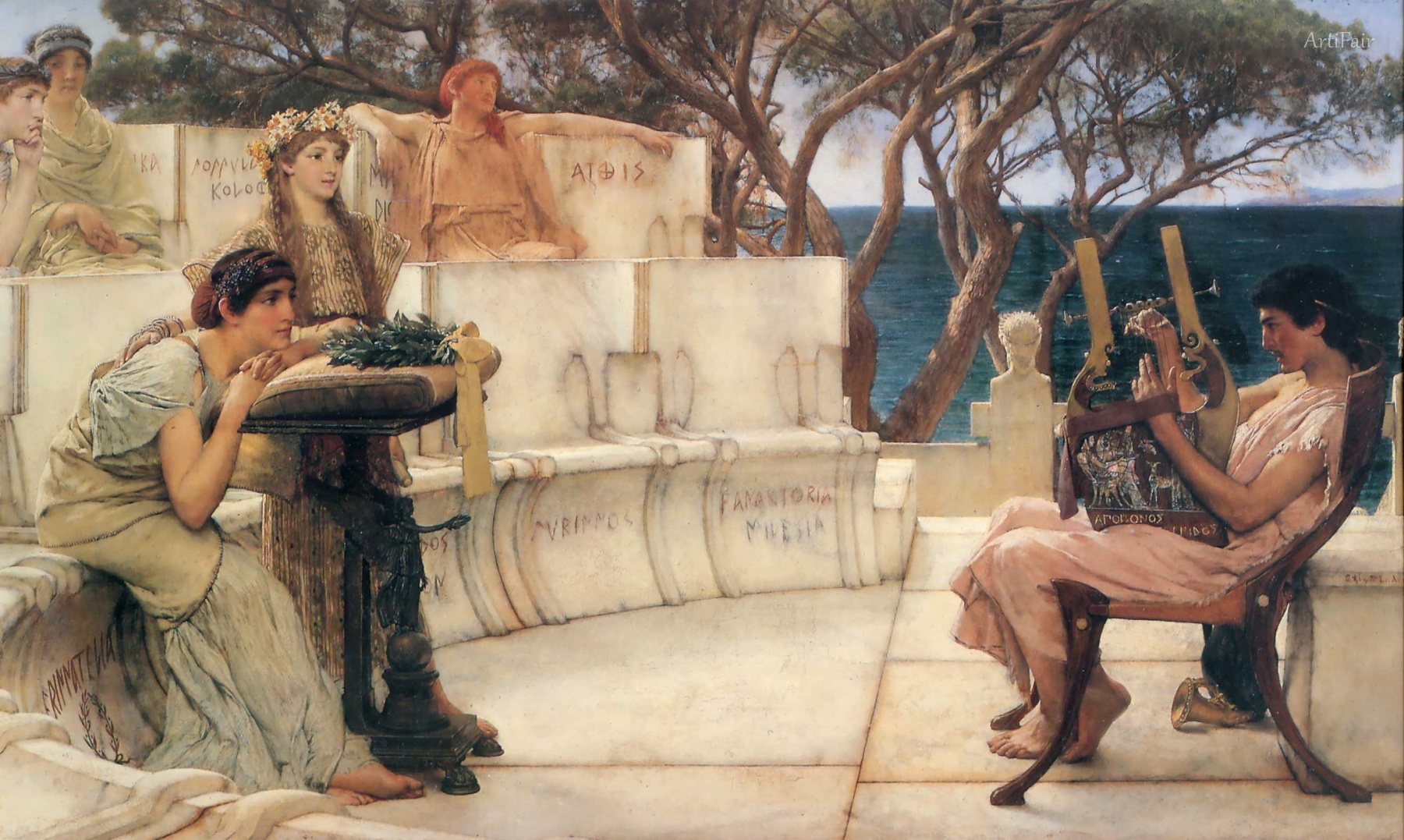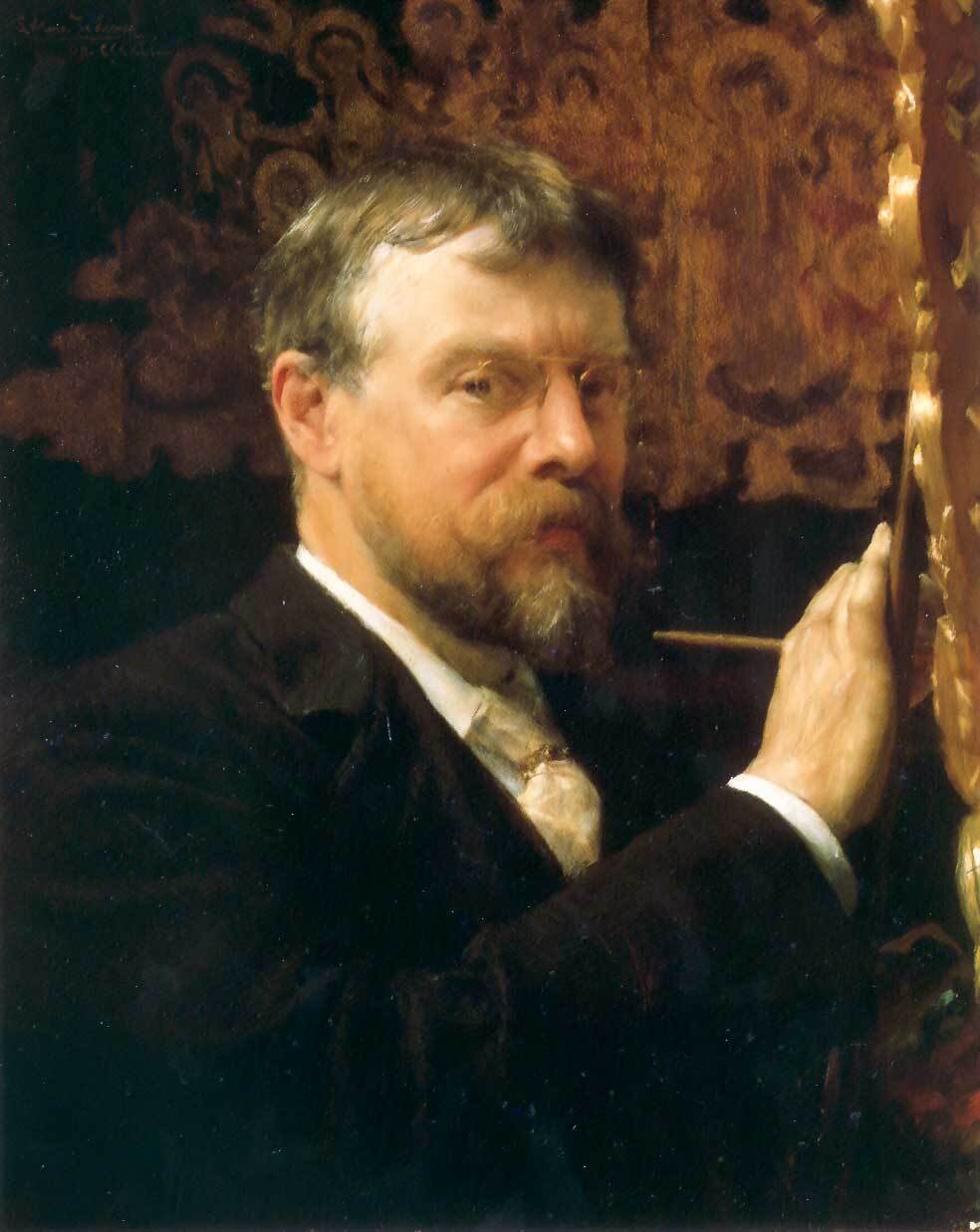

Lawrence Alma-Tadema
GB
26
Artworks
1836 - 1912
Lifespan
Artist Biography
Sir Lawrence Alma-Tadema (1836–1912) was a Dutch-born painter who rose to prominence in Victorian England, celebrated for his meticulously detailed and sumptuously rendered scenes of classical antiquity, particularly the Roman Empire. Born Lourens Alma Tadema in Dronryp, Netherlands, he demonstrated artistic talent early on. After a health crisis at fifteen led him to pursue art seriously, he trained at the Royal Academy of Antwerp in Belgium, studying under notable figures like Gustaf Wappers and later assisting Louis Jan de Taeye and Baron Hendrik Leys. These formative years instilled in him a passion for historical accuracy and classical subjects, initially focusing on Merovingian themes before shifting to Egyptian and, most famously, Greco-Roman settings.
In 1863, Alma-Tadema married Marie-Pauline Gressin-Dumoulin. Their honeymoon trip to Italy, especially Pompeii, profoundly influenced his artistic direction, igniting a lifelong fascination with Roman daily life and architecture. Tragedy struck with Pauline's death in 1869. Seeking a new beginning and encouraged by art dealer Ernest Gambart, Alma-Tadema moved to London in 1870. There, he met and married Laura Theresa Epps, an accomplished artist herself, in 1871. He anglicized his name to Lawrence Alma-Tadema, strategically incorporating 'Alma' into his surname for better catalogue placement. His career flourished in England; he became a British denizen in 1873 and was elected a Royal Academician in 1879, achieving immense popularity and financial success.
Alma-Tadema's artistic style is distinguished by its extraordinary attention to detail, brilliant color, and masterful rendering of textures, especially marble, earning him the nickname 'marbellous painter.' He was a perfectionist, conducting extensive research, using archaeological findings, photographs, and museum artifacts to ensure the historical accuracy of his settings, costumes, and objects. His paintings often depict languorous figures in opulent interiors or against stunning Mediterranean backdrops, evoking a sense of luxury and intimate drama from the ancient world. Key works such as "The Roses of Heliogabalus" (1888), "An Audience at Agrippa's" (1876), "Spring" (1894), and "The Tepidarium" (1881) showcase his skill in creating immersive and historically rich visions of antiquity.
Beyond easel painting, Alma-Tadema's artistic endeavors extended to designing lavish interiors for his London homes, which often served as settings in his paintings. He also engaged in theatre design, creating costumes and sets, and designed furniture, textiles, and picture frames, frequently inspired by Pompeian or Egyptian motifs. His meticulous approach, while celebrated, sometimes drew criticism for being overly pedantic or resembling museum catalogues. He was knighted in 1899 for his contributions to art, one of only eight Continental artists to receive this honor at the time. His opus numbering system, reaching CCCCVIII with "Preparations in the Coliseum" (1912), helped authenticate his works.
Despite his immense fame during the Victorian era, Alma-Tadema's reputation declined sharply after his death in 1912, overshadowed by the rise of modern art movements which he disapproved of. Critics like John Ruskin dismissed his work. However, a significant revival of interest began in the 1960s, leading to a re-evaluation of his contribution to 19th-century art. Today, he is recognized as one of the foremost classical-subject painters of his time, admired for his technical virtuosity and his ability to bring the ancient world to life with vivid detail and evocative atmosphere. His paintings have significantly influenced cinematic depictions of antiquity, from early Hollywood epics by D.W. Griffith and Cecil B. DeMille to modern films like "Gladiator." His works now command substantial prices at auction, reflecting his restored status in art history.